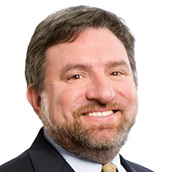Patent Marking: Recent Federal Circuit Guidance, Complying With False Marking Statute

Welcome! Strafford is now BARBRI! The expert courses you know from the trusted global leader in legal education.
Course Details
- smart_display Format
On-Demand
- signal_cellular_alt Difficulty Level
- work Practice Area
Patent
- event Date
Thursday, May 14, 2020
- schedule Time
1:00 p.m. ET./10:00 a.m. PT
- timer Program Length
90 minutes
-
This 90-minute webinar is eligible in most states for 1.5 CLE credits.
-
Live Online
On Demand
This CLE course will guide patent attorneys on deciding whether, when, and how to mark items as patented. The panel will examine recent Federal Circuit decisions on patent marking. The panel will offer best practices for marking patented items and for minimizing liability risks.
Faculty

Mr. Feller’s practice focuses on patents and related legal areas which involve the development and use of technology, including patent litigation and inter-partes review, patent prosecution, offensive and defensive patent portfolio analysis and development, IP risk assessments, product clearance, and strategic IP counseling. Mr. Feller also provides general client counseling related to protection and enforcement of trademarks, copyrights, and other aspects of intellectual property. His corporate practice addresses transactional issues including sales and licenses of IP, IP diligence associated with investments in technology companies, and software development and service agreements.

Mr. Kacedon is a recognized authority in IP transactions having drafted and negotiated hundreds of agreements across all technologies. He is designated as a Certified Licensing Professional. He has also successfully litigated multiple lawsuits and arbitrations based on his extensive transactional experience. Mr. Kacedon’s practice focuses on patent and technology licensing and litigation. In his transactional practice, he assists clients in conducting market assessments for their patents, conducts licensing negotiations, drafts licensing agreements, and participates in related litigations. His experience includes setting up and directing international patent licensing and enforcement programs, including one that resulted in more than 500 license agreements. Mr. Kacedon is a frequent presenter at legal and industry workshops and conferences and has served as adjunct professor teaching licensing at the George Washington University Law School.

Mr. Rygiel specializes in obtaining utility and design patent protection for cutting edge technologies in the consumer product, vehicle system, medical device, manufacturing, and e-commerce industries. His practice also focuses on complex post-grant proceedings at the USPTO, analyzing patents for validity, infringement, and freedom-to-operate issues and providing related opinions of counsel, and counseling on IP due diligence in connection with portfolio acquisitions.
Description
The Federal Circuit recently addressed patent marking in its decision in Arctic Cat Inc. v. Bombardier Rec. Prods. (Fed. Cir. 2020). The court addressed whether the cessation of sales of unmarked products excuses noncompliance with the notice requirement of Section 287 such that a patentee may recover damages for the period after sales of unmarked products ceased but before the filing of a suit for infringement. The court held that it does not.
Deciding whether or not to mark articles as patented and complying with the False Marking Statute are not cut and dried. False patent marking can occur under a variety of circumstances, and anyone claiming a competitive injury from an alleged false marking may sue for the alleged mismarking of an unpatented item.
Companies and counsel must carefully weigh the costs and benefits of enforcing patents in deciding whether to mark the patented item.
Listen as our authoritative panel of patent attorneys examines patent marking requirements and discusses recent court treatment and what it means for patent owners, licensees, etc. The panel will also review whether, when, and how to do patent marking. The panel will address the issue of false marking and offer best practices for marking patented items, pre-assertion diligence and considerations, and for minimizing liability risks.
Outline
- Patent marking requirements
- Court treatment
- Patent marking
- Determining whether to mark: considerations
- When to mark
- How to mark
- Strategic enforcement considerations in view of a failure to mark
- Minimizing risk of liability for false marking
Benefits
The panel will review these and other key questions:
- What factors must be considered when determining whether to mark a patented item?
- How are the federal courts treating claims that allege false marking?
- What steps can companies and their counsel take to minimize and mitigate the risks associated with false marking?
Unlimited access to premium CLE courses:
- Annual access
- Available live and on-demand
- Best for attorneys and legal professionals
Unlimited access to premium CPE courses.:
- Annual access
- Available live and on-demand
- Best for CPAs and tax professionals
Unlimited access to premium CLE, CPE, Professional Skills and Practice-Ready courses.:
- Annual access
- Available live and on-demand
- Best for legal, accounting, and tax professionals
Unlimited access to Professional Skills and Practice-Ready courses:
- Annual access
- Available on-demand
- Best for new attorneys
